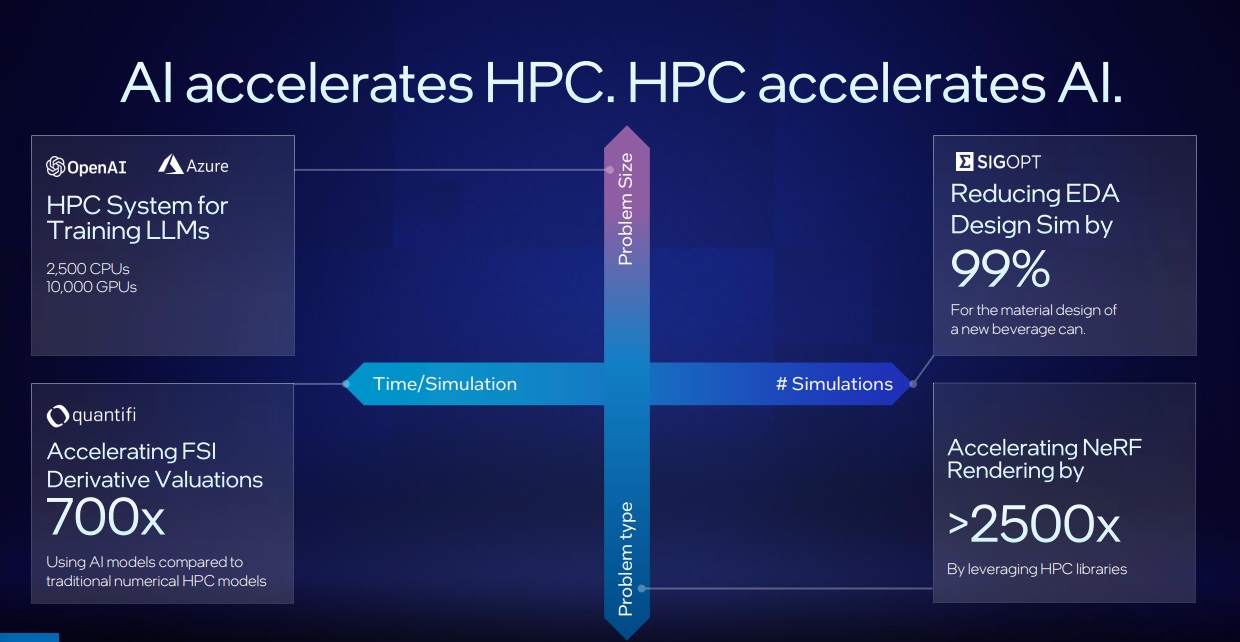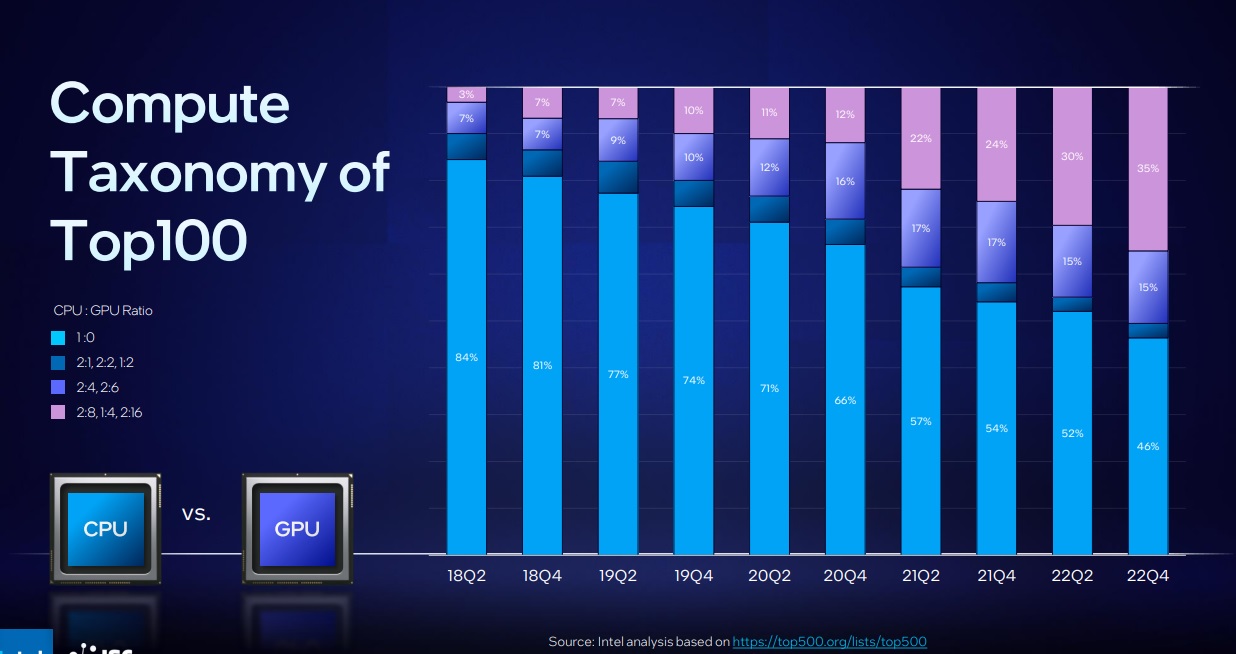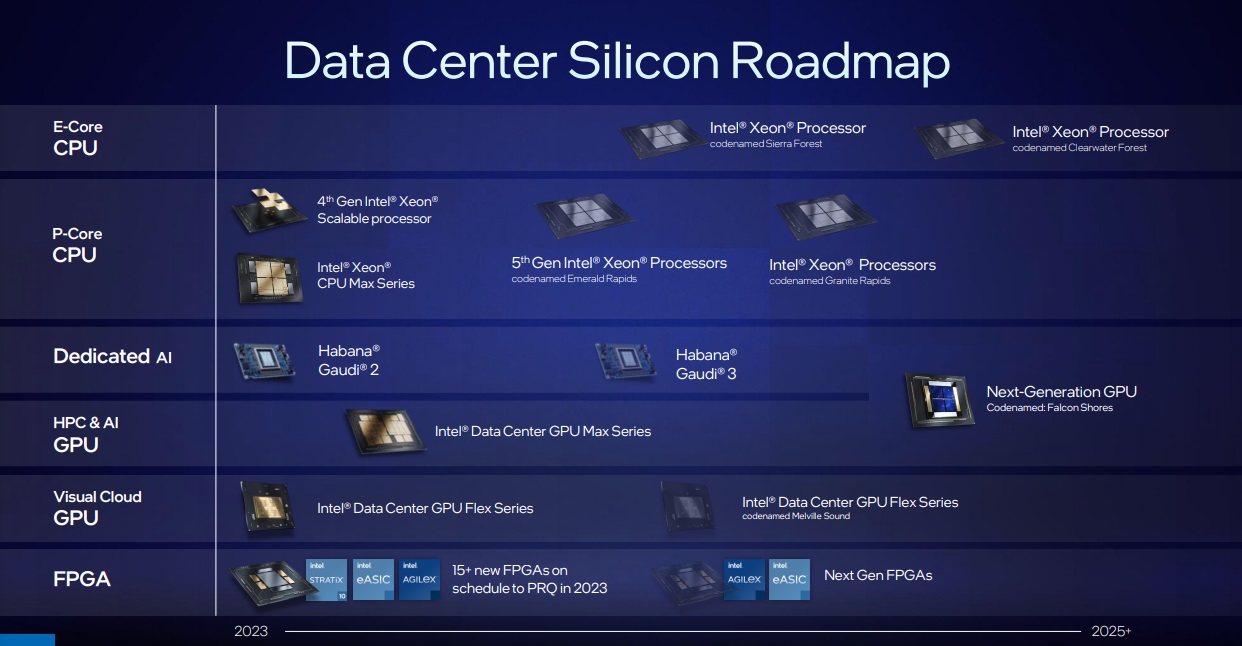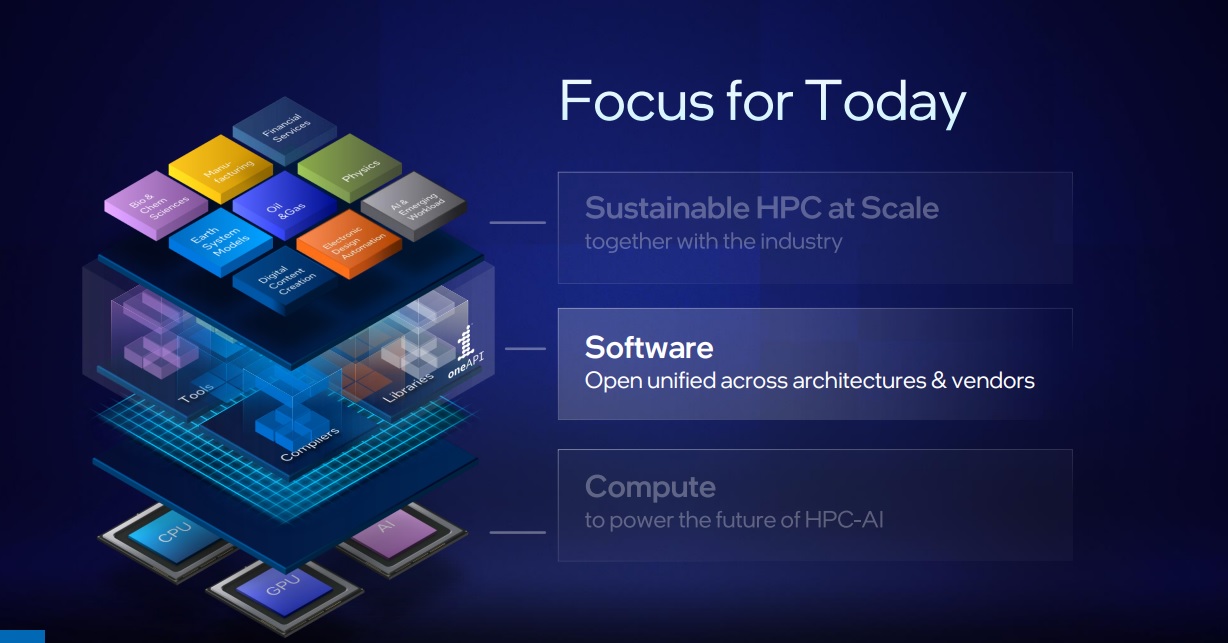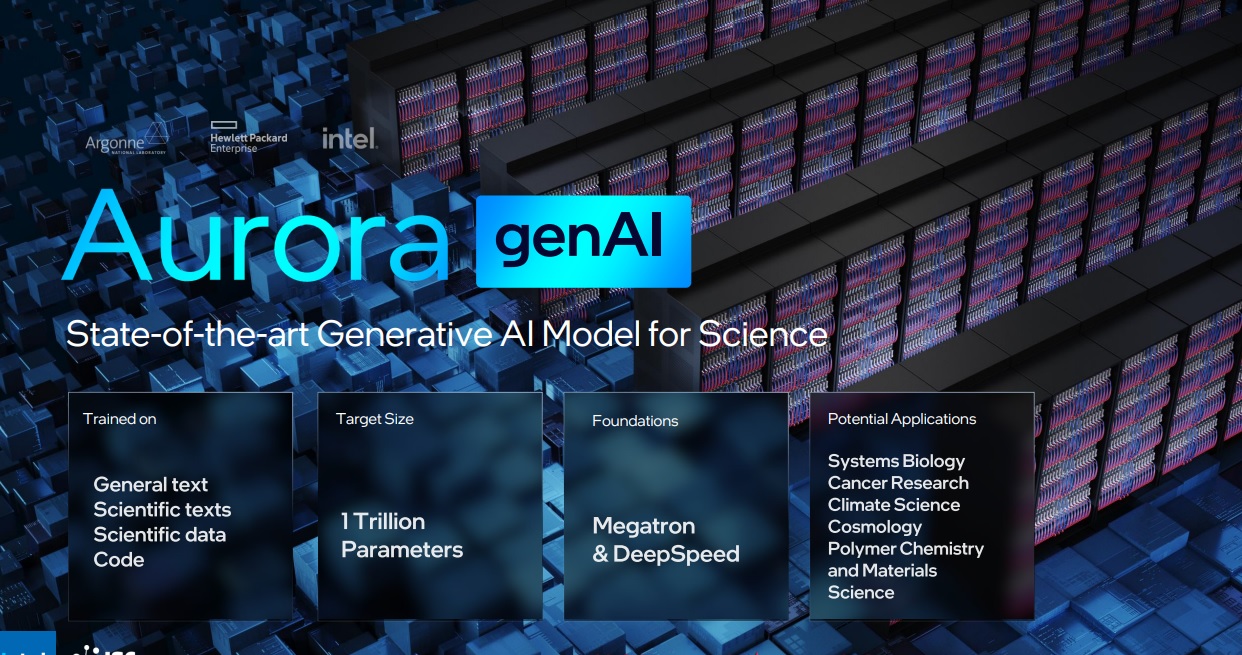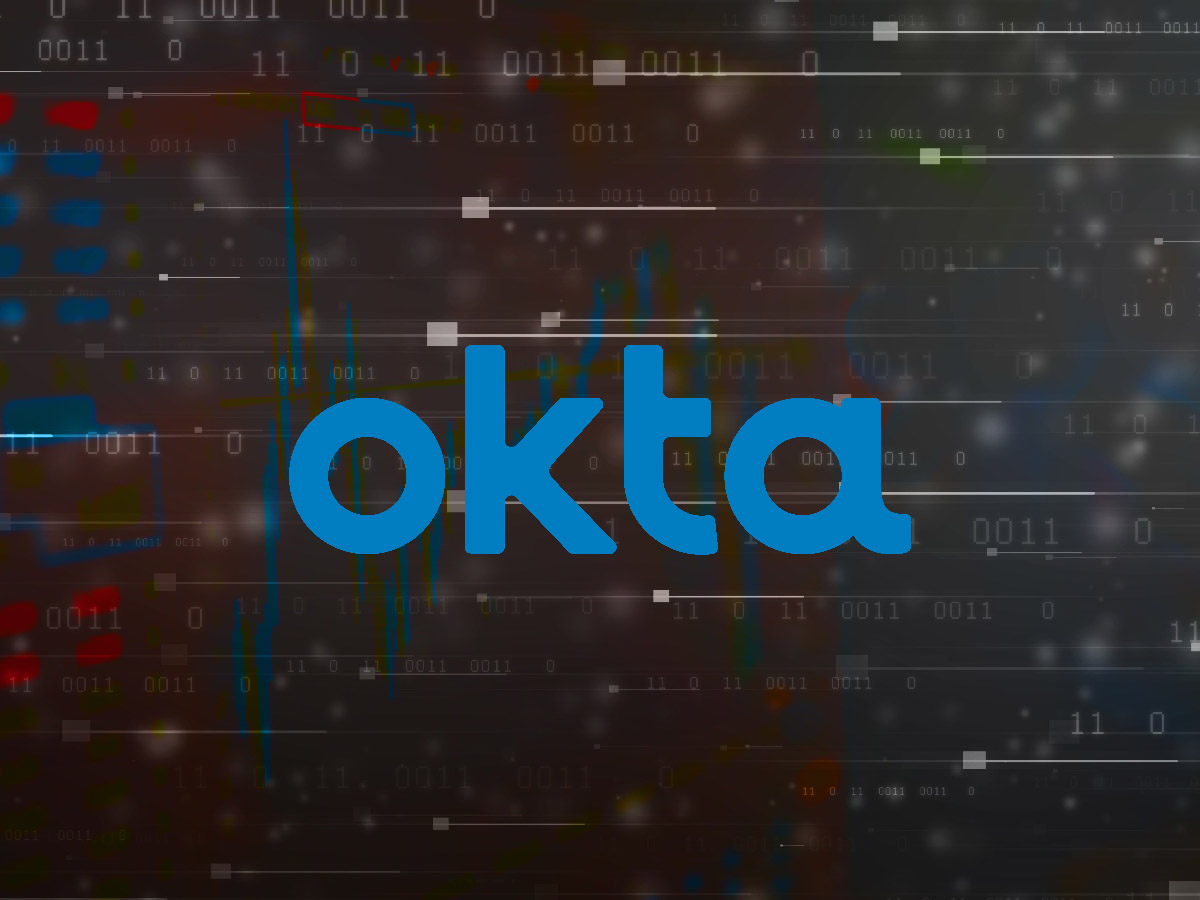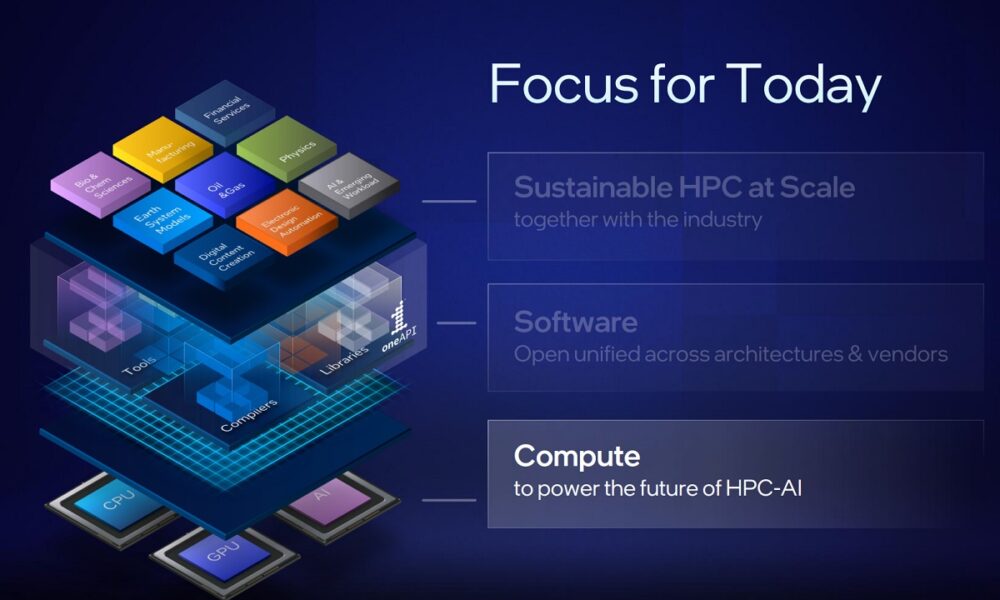
Intel participated in ISC 2023, and a few days before it was held we had the opportunity to participate in a special online event where the Santa Clara giant reviewed the most relevant news from your portfolio of professional solutions, and also shared some of the most important achievements that they have recently achieved within the HPC (high performance computing) sector.
The information we were able to see was very extensive, and for obvious reasons we cannot review it completely, but we can see the most important keys. First, Intel highlighted the performance offered by its new products for HPC and AI, and showed us very interesting images where we saw how HPC and IA complement each other perfectlyand also how the proportional use of CPUs and GPUs has evolved in the 100 most powerful supercomputers of the moment.
The CPU has lost weight against the GPU, since we have an increasing ratio of GPUs to each CPU. In light blue we see the ratio 1:0 (CPU and GPU), in darker blue a ratio 2:1, 2:2 or 1:2, in violet we have ratios 2:4 and 2:6, and in pink ratios 2:8, 1:4 and 2:16. In high-performance computing focused on AI, it is precisely where the GPU is having the greatest impact.
Intel is fully aware of this, and that is why Intel continued to show how its portfolio of products and solutions has evolved and how it has adapted to this reality. At the CPU level, the new processors stand out Sapphire Rapids (4th generation Xeon)which are a clear commitment to specialization they use advanced packaging techniques and are available in a Max version, which includes integrated HBM memory.
The company has also made important strides in dedicated hardware for AI thanks to Habana Gaudi 2, and is already working on its successor, as we can see in the attached image. At the HPC, AI and GPU level we have the Intel GPU Max series for data centers, and for visual cloud computing the giant offers the Flex series GPUs. We can’t forget about your Stratix, eASIC and Agilex FPGAs.
We also know that Intel maintains its commitment to unify software and hardware, thereby offering an improved user experience and making things increasingly easier for developers and industry professionals. Last but not least, the chipa giant has confirmed that it has already delivered more than 10,000 blocks for the creation of the Aurora supercomputer, an impressive team that will be made up of 63,744 GPUs, 21,248 CPUs and 1,024 DAOS storage nodes. Its performance in FP64 (double precision) will be around 2 EXAFLOPS.
